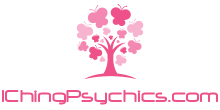 The Ching is one of the oldest books that ever existed. Some are over 3000 years old. This book deals with a profound study of change and not religious beliefs or fortune telling. There is a basic fact of life and the universe within the great chaos or the unexpected. Patterns and cycles are brought into existence through the interaction of these two processes. They are known as change. The unexpected constantly confront our life. The ever-changing occurrences and opportunities are likely to lift us up or put us down. These currents are ridden skillfully as the Ching presents. It does this by giving feedback to questions that will later help us to make important decisions and calm down our emotions.
The Ching is one of the oldest books that ever existed. Some are over 3000 years old. This book deals with a profound study of change and not religious beliefs or fortune telling. There is a basic fact of life and the universe within the great chaos or the unexpected. Patterns and cycles are brought into existence through the interaction of these two processes. They are known as change. The unexpected constantly confront our life. The ever-changing occurrences and opportunities are likely to lift us up or put us down. These currents are ridden skillfully as the Ching presents. It does this by giving feedback to questions that will later help us to make important decisions and calm down our emotions.
The Ching was consulted on matters relating to state, decision making and warfare in addition to being a book of wisdom in the oldest Chinese culture. It is its aspect that’s represented here. Whatever will happen in the future will not be presented to us when we consult the Ching. It doesn’t foretell the future.
Something we can gain from the Ching is the fact that it frequently tells us how the situation is and what we face. This gives us confidence and clears our thoughts in relation to the things we face. This means, consulting the Ching is more of definition, especially our actions rather than an aspiration for worries about the future. It helps us create our own future and not to wait on the worldly things.
Both great men and women have consulted the Ching in the recent past.
How to consult the Ching- The Book of Change
The first step is to define the question. They shouldn’t be many questions but just have one in mind. It can be a question like, what am I supposed to guard against this issue? Which direction should I take? What are my expectations with my new relationship?
How to consult the Ching traditionally is through throwing a bundle of yarrow sticks? It is a very long process that is ritualistic too. Its modern equivalence is the usage is the use of the three coins. They are thrown three times. Specific results will come as a result of each throw. This result is called a LINE. The line can either be unbroken horizontally or just a horizontal line with a break in the center.
This will give either positive feedback or a negative one. Yes, is represented by the unbroken line. And the broken one a negative or no.
Technical Information
The three coins are thrown six times. One line is generated in the hexagram by just one throw. Beginning from down to up.
In the past, the coins used were those with a hole in the center. One side marked and another side blank. The marked side is a positive one while the blank side is negative or ‘tails’.


What a beautifully profound exploration of the Ching! It’s refreshing to see such emphasis on understanding change rather than succumbing to superstition. This is a timeless reminder of our agency in shaping our destinies.
Ah, the Ching! The original self-help book, long before it was trendy. Who needs therapists when you can throw coins and yarrow sticks? It’s like flipping a coin but with more mystique!
‘Mystique’ is one way to put it. I suppose people have always preferred divination over critical thinking!
‘Critical thinking’—how boring! I say let’s just consult our magic eight balls instead!
“The article hints at a deeper philosophical inquiry: if change is inevitable, how do we cultivate resilience? The Ching offers one lens among many through which to view this question.”
“The methodology described for consulting the Ching mirrors various ancient practices worldwide, which often blend spiritual insight with practical wisdom. It’s fascinating how cultures converge in their understanding of change and decision-making.”
“So we’re throwing coins now instead of making sound decisions? Excellent strategy for modern living! Why not just consult Google while we’re at it?”
“A fascinating read, yet one must wonder about the implications of relying solely on an ancient text for guidance in our multifaceted lives today. Are we not losing touch with empirical reasoning?”
While the historical significance of the Ching is undeniable, I question its relevance in contemporary decision-making. Can we really rely on ancient rituals to guide us through modern complexities? It seems rather naive.
The article provides an insightful summary of the Ching’s principles. The distinction between consulting for clarity versus fortune-telling is crucial and often overlooked. This perspective opens new avenues for philosophical discussion.